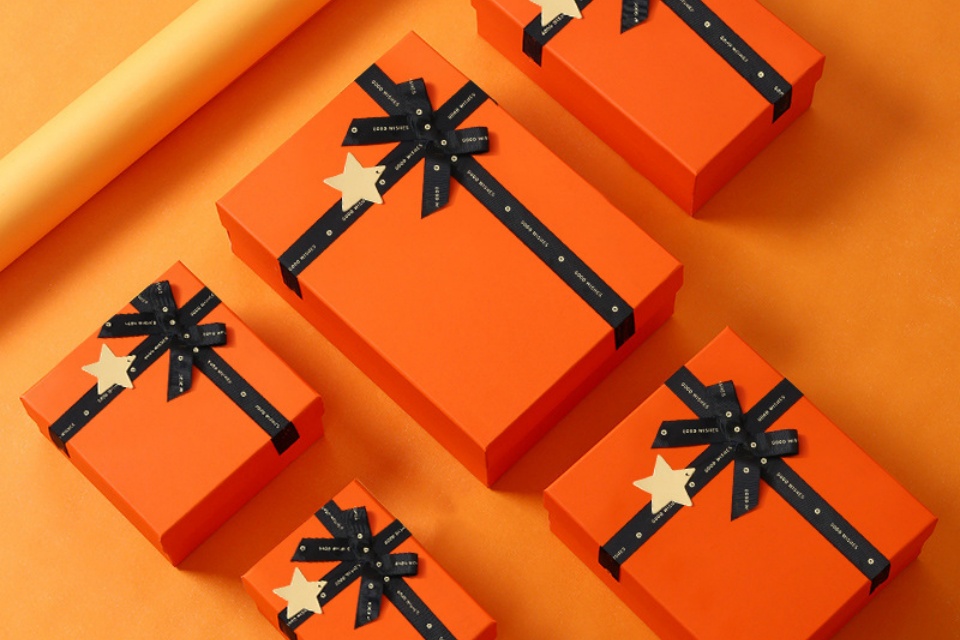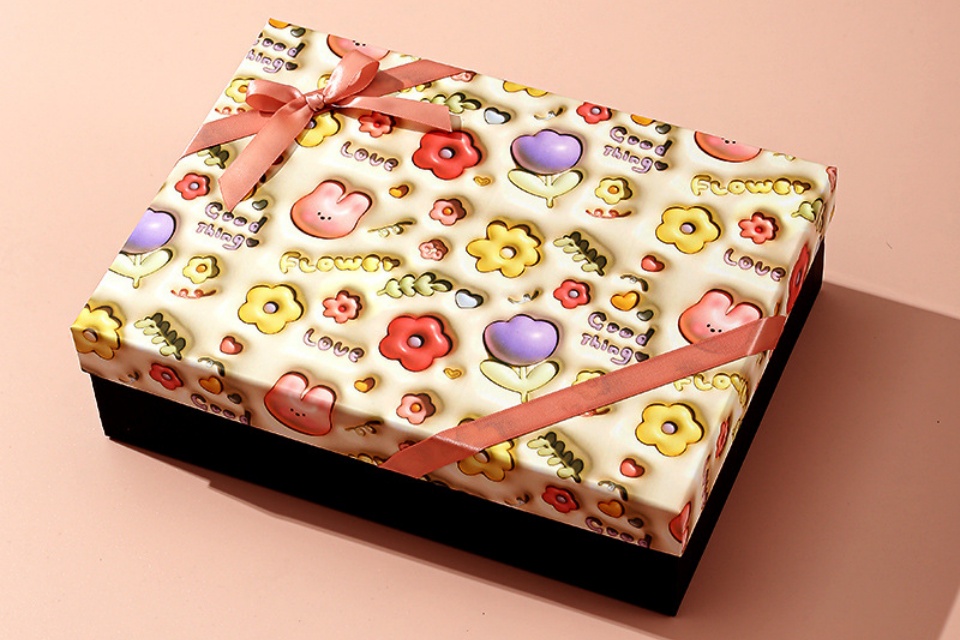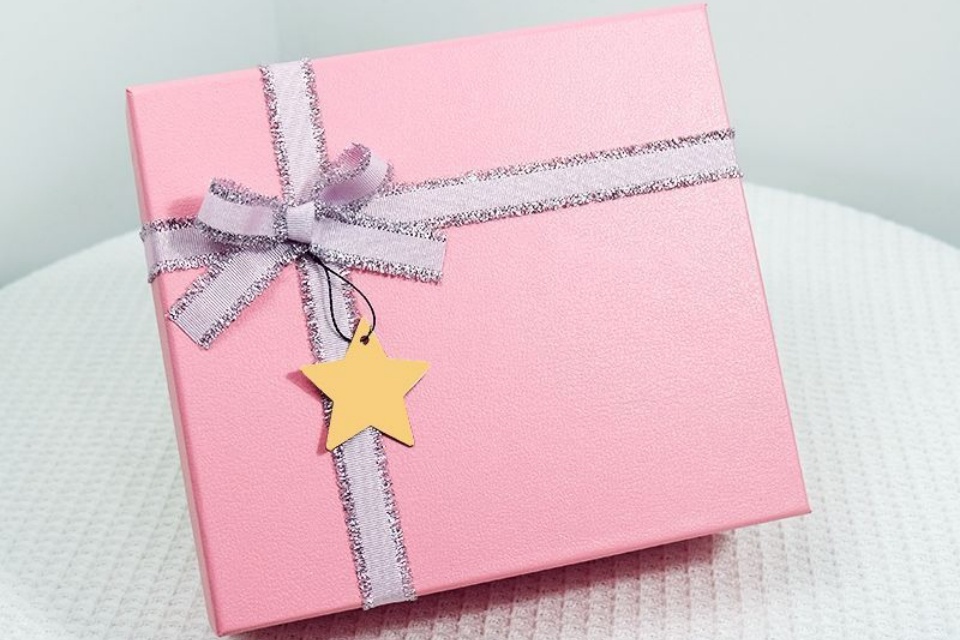Customizing Lid & Base Boxes with Inserts
This article explores customizing lid base boxes with inserts, detailing the types, materials, and benefits for enhanced product protection and brand presentation.
Summary
Customizing lid base boxes with inserts is an innovative packaging solution that enhances both the aesthetic appeal and functional protection of products across various industries. Lid base boxes, which consist of a separate lid and base tray, are widely recognized for their durability and versatility, making them an optimal choice for retail, gift, and subscription packaging. The incorporation of customized inserts within these boxes allows brands to secure items effectively, provide additional cushioning, and create a memorable unboxing experience, thereby reinforcing brand loyalty and customer satisfaction.
This customization process involves multiple critical steps, including design, material selection, and production, which must be carefully executed to balance aesthetics and functionality. Common types of inserts include custom-fitted options for delicate items, promotional inserts for brand engagement, and built-in designs for streamlined presentation. The choice of materials for both the boxes and inserts is vital, as it impacts the environmental sustainability and overall cost-effectiveness of the packaging solutions.
Despite its advantages, the customization of lid base boxes also faces challenges such as rising material costs, maintaining product safety during shipping, and ensuring regulatory compliance. Moreover, balancing consumer expectations for sustainability with aesthetic design poses an ongoing dilemma for brands in an increasingly eco-conscious market. Nevertheless, effective customization strategies can significantly enhance product visibility and protect items during transit, ultimately driving brand awareness and customer retention.
Overall, the trend toward customizing lid base boxes with inserts highlights a growing recognition of the importance of packaging in consumer experience and brand identity. As businesses continue to explore innovative and sustainable packaging solutions, these customized boxes are poised to play a critical role in enhancing product presentation and securing customer loyalty in various sectors, from luxury goods to everyday retail items.
Table of Contents
Types of Lid Base Boxes
Lid base boxes, also known as two-piece product boxes or set-up boxes, come in various designs and materials, catering to diverse packaging needs. These boxes consist of a separate lid that fits over a base tray, forming a sturdy and functional structure suitable for various applications.
Common Materials
Lid base boxes can be constructed from a variety of materials, each offering unique benefits:
- Rigidstock: This high-quality, hard paper material is ideal for luxury items, providing both durability and an attractive appearance on shelves.
- Plastic: Clear vinyl and PET plastic lids are common for these boxes, offering a unique presentation while being highly recyclable.
- Cardboard and Corrugated Materials: Often used for their lightweight properties and ability to protect contents during transit, these materials are particularly popular for food and gift packaging.
Box Designs
The versatility of lid base boxes is evident in their various designs, which can be tailored to specific purposes:
- Compartmentalized Boxes: Many lid base boxes feature compartments, especially useful for packing food items. These boxes typically come with two or three sections to help organize contents efficiently.
- Clear Lid Options: Boxes with clear lids are designed for visibility, allowing users to see the contents without opening the box. This enhances user experience and makes them ideal for retail displays.
- Rectangular Shapes: While commonly found in square formats, lid base boxes are also available in rectangular shapes, providing additional flexibility for different products.
Functional Benefits
The design of lid base boxes allows for easy access to the items inside, making them a preferred choice for consumers. Their ability to provide a full view of the contents enhances user interaction and satisfaction. Additionally, they can be elevated into visually appealing packaging solutions through careful material selection and thoughtful design, ensuring they stand out on shelves and meet branding requirements.

Inserts for Lid Base Boxes
Inserts play a crucial role in enhancing the functionality and aesthetic appeal of lid base boxes. They are designed to hold products securely, provide additional protection during shipping, and enrich the overall unboxing experience for customers.
Types of Inserts
Custom-Fitted Inserts
Custom-fitted inserts are tailored to the specific dimensions and shape of the products being packaged. They are commonly used to cradle delicate items such as jewelry, ensuring that each piece is securely held in place to prevent movement and potential damage during transit. These inserts can be made from various materials, including foam, molded pulp, and rigidstock, depending on the level of protection required.
Promotional Inserts
Promotional inserts serve multiple purposes, including brand awareness and customer engagement. They can include discount offers, product information, or thank-you messages, which can significantly enhance customer satisfaction and foster brand loyalty. The inclusion of promotional inserts not only adds value to the customer’s experience but also encourages repeat purchases.
Built-in Inserts
Built-in inserts are integrated into the design of the lid base box itself, providing an efficient way to showcase the products. These inserts are often made from lightweight materials that offer cushioning while maintaining a stylish presentation. By using built-in inserts, brands can create a more organized and appealing display for their products.
Material Considerations
The choice of material for inserts is vital, as it affects both the protection offered and the visual appeal of the packaging. For instance, foam inserts provide excellent cushioning but may not always be the most sustainable option unless biodegradable variants are used. Alternatively, molded pulp inserts are eco-friendly and can offer lower per-unit costs for larger orders, although they may require higher upfront tooling costs.
Importance of Inserts
Inserts in lid base boxes enhance the customer experience by ensuring that products are securely held in place, minimizing the risk of damage during shipping. They also contribute to a luxurious unboxing experience, which can elevate the perceived value of the brand. A well-designed insert can make a memorable impression, encouraging customers to share their experience on social media and leave positive reviews. By integrating custom inserts, brands can effectively communicate their values and reinforce customer relationships, ultimately driving brand loyalty and satisfaction.

Customization Process
The customization process for lid base boxes with inserts involves multiple critical steps that ensure both functionality and aesthetic appeal.
Design and Prototyping
The initial phase includes designing and prototyping the insert. This step is crucial as it allows for the testing of fit and functionality, ensuring that the insert meets the product’s requirements and provides adequate protection during transit. During this phase, manufacturers create a prototype that reflects the intended design, allowing for adjustments before full production.
Material Selection
Selecting the right materials is a fundamental aspect of the customization process. Materials must be chosen based on their characteristics, balancing factors like sustainability, performance, and cost. Options include recycled cardboard, biodegradable packaging solutions, and compostable films. Custom box inserts can be made from a variety of materials, including molded pulp, foam, or cardboard, each offering different advantages in terms of protection and presentation.
Tooling and Production
After finalizing the design and selecting materials, tooling is necessary for production. Tooling costs can vary significantly based on the complexity of the design, impacting both the upfront and per-unit costs of the inserts. For example, while molded pulp inserts might have higher initial tooling costs, they can offer lower costs for larger orders due to economies of scale. The production process typically employs techniques such as die-cutting for cardboard or molding for foam and pulp materials.
Optimization for Efficiency
Efficient design is also essential in the customization process. This includes optimizing the packaging design to use fewer materials, right-sizing boxes, and eliminating unnecessary components. A minimalist approach not only cuts costs but also contributes to sustainability efforts by reducing packaging waste and carbon emissions.
Compliance and Testing
Lastly, businesses must ensure that their custom packaging inserts comply with online marketplace policies, such as those set by Amazon and eBay. Adhering to these guidelines is vital to avoid penalties or negative repercussions. Additionally, it is important to test various types of inserts and measure their effectiveness through customer feedback and data analytics, refining the approach to enhance the overall unboxing experience.
Through these steps, companies can create tailored packaging solutions that not only protect products but also enhance brand visibility and customer satisfaction.

Applications
Lid and Base Boxes have become increasingly popular across various industries due to their versatility and user-friendly design. These boxes are not only aesthetically pleasing but also serve multiple practical purposes that enhance the overall customer experience.
Retail Display Packaging
For products intended for retail shelves, Lid and Base Boxes are particularly advantageous. Their easy-to-open design allows customers to examine products without damaging the packaging, making them an excellent choice for retailers seeking to improve the shopping experience. Additionally, store staff can quickly access inventory for restocking, streamlining operations in busy retail environments.
Gift Boxes and Hampers
Lid and Base Boxes are also ideal for gifts, as they create a delightful unboxing experience. The simple mechanism allows recipients to easily reveal their presents, ensuring that the experience is filled with joy and anticipation rather than frustration. This makes them a popular choice for gift boxes and hampers, contributing to customer satisfaction and brand loyalty.
Subscription Boxes
The subscription box model has gained significant traction in recent years, and Lid and Base Boxes play a crucial role in this trend. Subscribers eagerly await their boxes and appreciate easy access to their contents upon arrival. The user-friendly design of these boxes enhances the subscription experience, making it seamless and enjoyable.
Promotional Kits and Welcome Packs
Lid and Base Boxes are also widely used for promotional materials, welcome kits, and press packs. The design facilitates quick access to the contents, enabling recipients to engage with the information or products provided. This is especially important for businesses looking to make a strong first impression with their promotional efforts.
Products for Frequent Use or Demonstration
Items that customers need to access regularly, or that are demonstrated in retail environments, benefit from the convenience of Lid and Base Boxes. For example, product samples and testers can be packaged in these boxes, making them easy to handle and display.
Packaging for All Demographics
One of the standout features of Lid and Base Boxes is their accessibility. The universally easy-to-open design caters to a broad demographic, including elderly customers or those with limited dexterity. This inclusivity ensures user satisfaction across various consumer segments.

Benefits of Customization
Customizing lid base boxes with inserts offers numerous advantages that enhance both product protection and brand engagement. These benefits are crucial for businesses aiming to elevate their packaging strategy and customer experience.
Enhanced Product Protection
One of the primary functions of customized box inserts is to provide robust protection for products during shipping and handling. Inserts are specifically designed to secure items within the packaging, ensuring that they arrive in pristine condition. This is particularly important for fragile or delicate items, as damaged products can lead to increased returns and a negative brand reputation. By preventing damage, custom inserts contribute significantly to customer satisfaction and loyalty.
Aesthetic Appeal and Brand Promotion
Custom inserts not only serve a protective function but also enhance the aesthetic appeal of packaging. A polished and visually appealing presentation can make products more attractive on retail shelves, thereby influencing purchasing decisions. Furthermore, inserts can reinforce brand identity by telling a story through their materials, colors, and design. Effective branding on packaging can create a lasting impression, strengthening brand recognition and customer loyalty.
Customer Engagement and Retention
Incorporating promotional elements such as discount codes, special offers, or product samples within packaging inserts can drive customer engagement and encourage repeat purchases. This sense of exclusivity fosters loyalty, as customers feel valued and appreciated. Moreover, providing clear and accurate information about products helps build trust, leading to increased brand loyalty over time.
Improved Brand Awareness
Custom box inserts offer an opportunity to promote additional products or services, facilitating cross-selling and enhancing overall brand awareness. By showcasing a broader range of offerings, brands can encourage customers to explore more, ultimately boosting sales and reinforcing brand identity.
Support for Sustainability Efforts
As consumer preferences increasingly lean towards sustainable practices, custom inserts can align with eco-friendly packaging solutions. Utilizing recycled materials and minimalist designs not only reduces environmental impact but also enhances the brand’s reputation among eco-conscious consumers. By incorporating sustainable features, brands demonstrate their commitment to environmental responsibility, appealing to a broader audience.
Versatile Application Across Industries
The versatility of custom box inserts makes them suitable for a wide range of industries, from luxury beauty products to electronics and healthcare. Regardless of the product type, customized inserts can elevate the overall delivery experience, ensuring that customers receive their goods securely and stylishly.
Challenges
The customization of lid base boxes with inserts presents various challenges that manufacturers and brands must navigate to ensure effective packaging solutions.
Material Costs and Availability
One of the primary challenges faced in the packaging industry is the rising material costs associated with sustainable options. Higher prices for eco-friendly materials can deter companies from adopting greener practices, especially when they compete with traditional, cheaper materials. Furthermore, the availability of advanced sustainable options is often limited, creating obstacles in sourcing the necessary components for customized packaging solutions.
Product Safety and Shelf Life
Maintaining product safety and shelf life while utilizing sustainable packaging materials can also pose significant challenges. The transition to eco-friendly materials may affect the durability and protective qualities of packaging, necessitating additional testing and validation to ensure that products remain safe and effective for consumers.
Consumer Disposal and Recycling Awareness
Another challenge is the effective disposal of packaging by consumers. Ensuring that customers are aware of proper recycling practices can be complex, particularly as recycling regulations vary significantly across different regions. Brands must invest in educating consumers about how to properly dispose of packaging to minimize environmental impact and maximize the benefits of sustainable practices.
Cross-Functional Collaboration and Incentives
Successful implementation of sustainable packaging solutions requires cross-functional collaboration within organizations. However, there is often a significant variation in awareness of sustainability commitments across departments, with product development showing a high level of awareness (92 percent) compared to manufacturing (75 percent) and marketing (67 percent). Additionally, the lack of meaningful incentives across functions—only about 20 percent of organizations have sufficient incentives—can hinder the drive for sustainability initiatives.
Balancing Aesthetics and Functionality
Creating aesthetically pleasing packaging while also ensuring functionality can be a delicate balance. The perception of product quality is closely linked to packaging design; if consumers perceive a product as high quality based on its packaging, they may be willing to pay a premium. However, if the packaging fails to meet functional requirements or appears to compromise on quality, it can lead to consumer dissonance and negatively impact purchasing decisions.
Regulatory Compliance
Lastly, navigating the complex landscape of regulatory compliance in packaging materials adds another layer of difficulty. Brands must ensure that their packaging meets all safety and environmental regulations while still delivering on consumer expectations for sustainability and quality.
By addressing these challenges head-on, companies can better position themselves to leverage sustainable packaging as a strategic advantage in an increasingly environmentally conscious market.
Case Studies
Overview of Customization Success
Numerous case studies highlight the effectiveness of customizing lid base boxes with inserts to enhance both protection and presentation of products. These custom solutions have been particularly beneficial across various industries, including jewelry, cosmetics, and electronics, showcasing the versatility and necessity of tailored packaging.
Jewelry and Gift Boxes
A notable case study involves the customization of jewelry boxes, where the addition of tailored inserts significantly improved product safety and customer appeal. By utilizing foam inserts designed to securely hold each piece, companies not only protected their delicate products but also enhanced the visual presentation, encouraging customers to make purchases.
Cosmetic Packaging Innovations
In the beauty segment, sustainable packaging has emerged as a key market driver. A survey indicated that 90% of American consumers are inclined to buy from brands that prioritize sustainable practices. This trend has led to innovative packaging solutions that include custom inserts made from eco-friendly materials. These efforts not only protect products but also align with consumer demand for sustainable options, thereby fostering brand loyalty and trust.
Perfume Packaging
Customizing inserts for perfume packaging is another area where significant advancements have been made. By implementing custom foam and cardboard inserts, brands have been able to prevent damage during transportation and enhance the overall presentation of their products. This approach not only safeguards the perfumes but also elevates the unboxing experience, contributing to customer satisfaction and repeat purchases.
Military and Professional Use
In sectors like military and professional music, companies have adopted customized lid base boxes with foam inserts to protect sensitive equipment, such as musical instruments and tactical gear. These cases are built to last, ensuring that the protective inserts also endure, thereby providing a long-term solution for safe transport.
